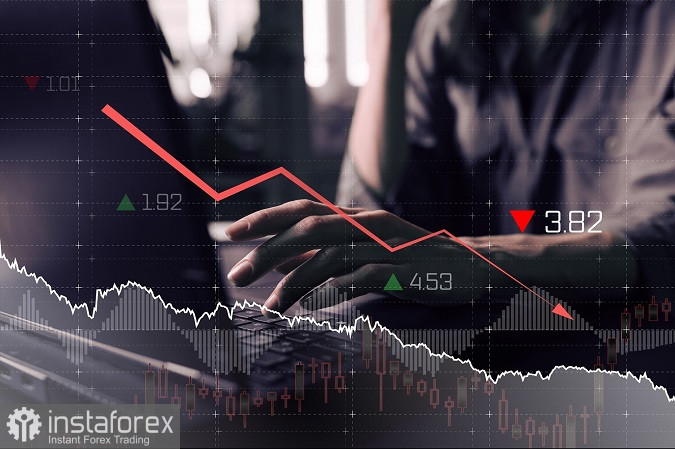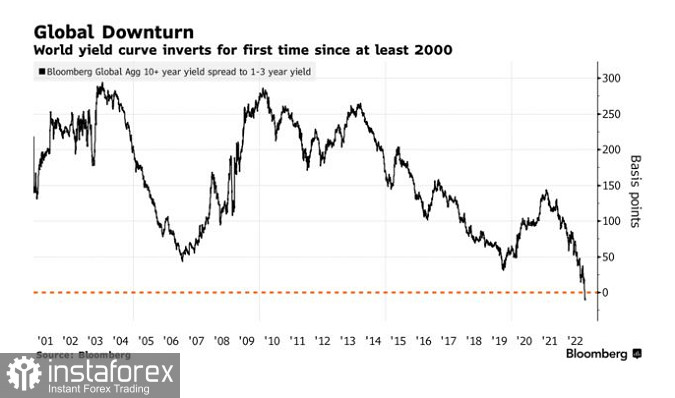
Global bonds have joined their U.S. counterparts in signaling a recession, with a gauge measuring the global yield curve inverting for the first time in at least two decades.
The average yield on sovereign debt maturing in 10 years or more has fallen below that of securities due in one to three years. This has never happened before based on data going back to the beginning of the millennium.

The inversion of the yield curve is usually seen to herald a recession, as investors switch money to longer-term bonds because of pessimism about the economic outlook. These fears are growing as policymakers around the world promise further monetary tightening to tame rising consumer prices.
"Central bankers paralyzed by inflation fears will keep cash rates anchored in the restrictive zone for longer," said Prashant Newnaha, a rates strategist at TD Securities Inc. in Singapore. "This will be a key catalyst for ongoing curve flattening."
European Central Bank President Christine Lagarde said Monday that further rate hikes were likely, saying she would be surprised if eurozone inflation peaked. Comments from four Federal Reserve officials on the same day noted the likelihood that rates should be raised.
Germany may already be in a recession, while the U.S. is likely to enter one by the middle of next year, according to strategists at Deutsche Bank AG, led by the group's chief economist David Folkerts-Landau in London.
The global yield curve inversion comes as bonds show a rebound rally on prospects that a slowing economy will prompt policy makers to slow or even halt rate hikes.





















